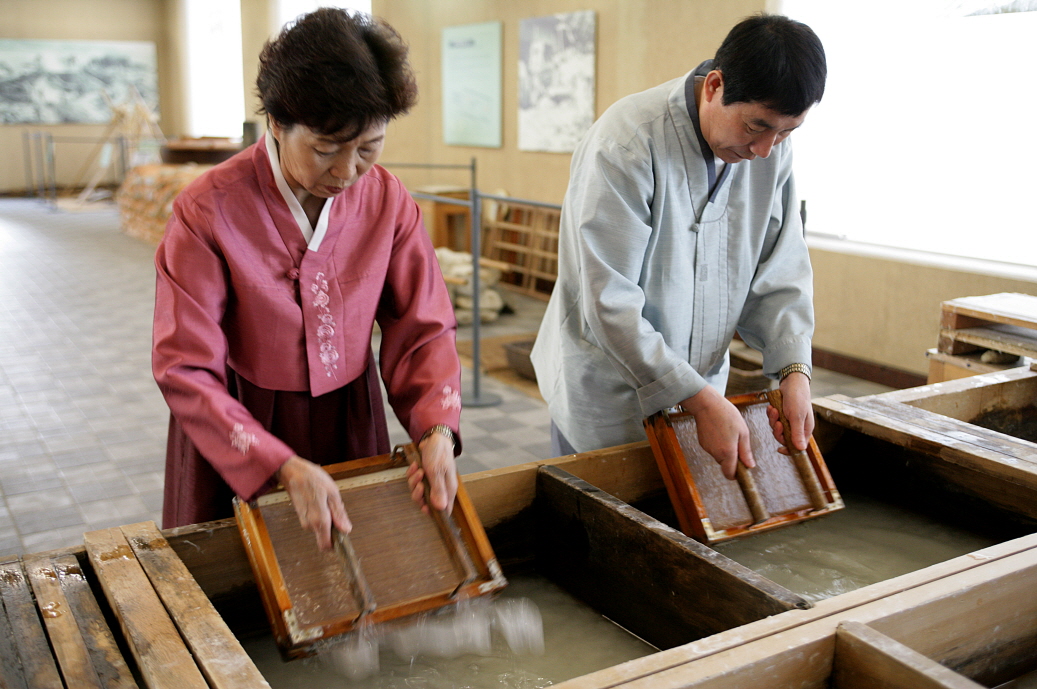
2. The branches of Mulberry are steamed and the outer layerof the bark is peeled to be dried in the sun.
3. This bark skin is socked in cold water for a day and is scraped with a knife to get rid of the black cuticle getting white bark.

4. The white bark is boiled in lye-ashes made from burnt bean stalks, buckwheat straw, pepper stalks, cotton stalks- for 6-7 hours.
5. The boiled fibers are washed to remove the lye and left in the sun.
6. The wet fibers are placed on a flat surface and beatten into a pulp.
7. Then the beatten pulp is mixed with clean water and Takpul, an annual grass used as a gluing agent.
 8. The mixed fibers are strained through a bamboo screen, which is shaken back and forth to create a crisscross pattern of fibers for extraordinary resiliency.
8. The mixed fibers are strained through a bamboo screen, which is shaken back and forth to create a crisscross pattern of fibers for extraordinary resiliency.9. The wet paper is lifted off the screen and laid onto a wooden plate. Stones are placed to press out the extra moisture.

10. Each sheet of paper is placed on the drying board and left to dry in the sun.
11. The dried sheets of paper are pounded until they lie flat and smooth.

Cho, Eunah. Cho Eun Art. http://www.choeunart.com/Page/2864/0-1/Hanji+(%ED%95%9C%EC%A7%80).aspx
Yum, Hyejung. Traditional Korean Papermaking: analytical examination of historic Korean papers and research into history, materials and techniques of traditional papermaking of Korea. 2003. http://www.library.cornell.edu/preservation/publications/koreanpapermaking.html
No comments:
Post a Comment